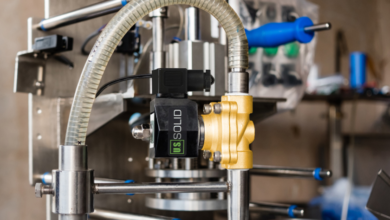Log Collection: Processing Raw Data into Valid Information

Modern enterprises depend on constant streams of data to keep their wheels spinning. Logs are the operational footprints from any server, app, or device. The process of collecting logs from different systems and centralizing them for easy access and analysis is called log collection.
When performed correctly, log collection assists in system troubleshooting, preventing security breaches and improving performance without the background noise in the IT teams.
What is Log Collection?
Log collection is simply the process of collecting log files from digital sources such as cloud servers, network devices applications, and containers. They’re basic logs that provide information related to the system, user, and error behavior.
Log collection means gathering all that info instead of having individual files across various systems. This saves time, reduces complexity, and allows you to identify similarities or persisting problems. They also ensure that critical operational data is never lost or missed, even in large and distributed systems. Logging consistently over time provides clearer context around all aspects of system performance, as well as operational data to help teams formulate better internal decisions.
Why It’s Important
As businesses transitioned to cloud-based operations and distributed environments, the volume of logs produced exploded. Without a method to collect logs, important information will disappear into the noise.
Benefits of appropriate log collection:
- Quicker discovering of performance issues
- Knowledge of how system health is at that given moment
- Enhanced patterns of compliance and increased audit preparedness
- Easier to identify root causes
In other words, the process of log collection is similar to a microscope for your infrastructure − it makes complex systems clear.
How Log Collection Works
It all starts with choosing the appropriate tools or agents that will collect logs from various sources. The logs collected are then sent to a centralized platform or server to be stored and to be analyzed or reviewed.
Log collection systems generally have three top-level responsibilities:
- Automatically collect logs from diverse nodes and applications.
- To analyze effectively we need to add filter to remove unwanted or duplicate entries.
- Secure logs and make them searchable on a large scale.
Current instruments employ automation, pattern recognition, and alerts to alert business managers when unusual activities occur or behavioral changes take place.
See also: Vibe Coding and Developer Wellbeing: A New Approach to Tech Culture
Use in Real-World Environments
Log aggregation is also used by organizations to monitor daily operations, and troubleshoot network failures ensuring that they are able to maintain the reliability of service. The collected logs help to reconstruct a timeline for system events in cybersecurity, which is an important factor in detecting intrusions and preventing data breaches. Log collection in DevOps is effective at the post-deployment phase to get a better understanding of how software plays a role in the overall performance and how better uptime can be ensured.
Log collection improves operational transparency and customer trust even for small enterprises.
Conclusion
Log collection, in the digital-first economy of today, is not merely a storage solution, but a platform for intelligent decision making. It offers a heads-up, taking teams from a state of reactivity to proactivity − detecting early warning signals of trouble long before they can do any damage. Log collection streams the scattered data into actionable insights and helps every organization keep stable, secure, and confident across the entire IT landscape.




